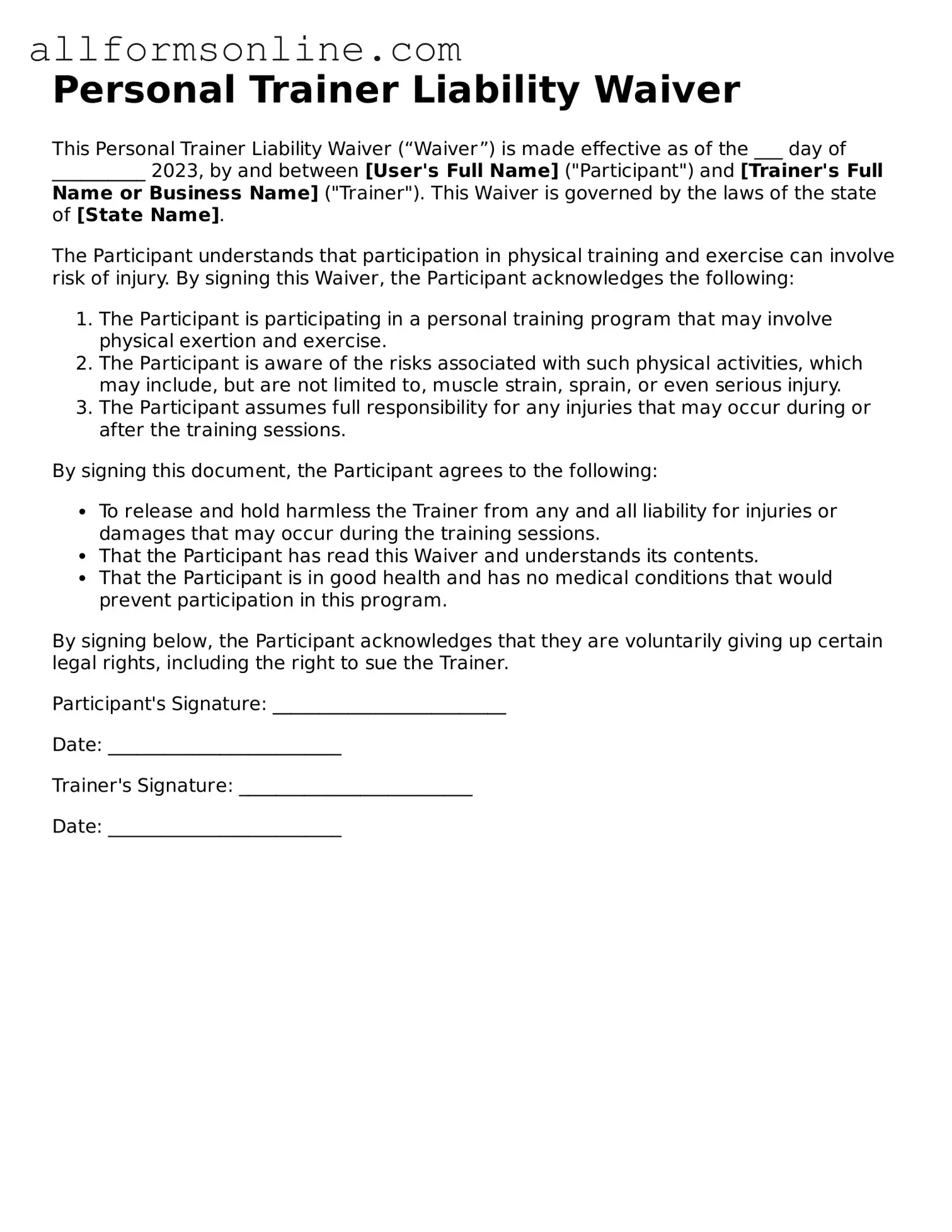What is a Personal Trainer Liability Waiver form?
A Personal Trainer Liability Waiver form is a document designed to protect personal trainers from legal claims that may arise during training sessions. By signing this waiver, clients acknowledge the inherent risks associated with physical activity and agree not to hold the trainer liable for injuries or accidents that may occur. This form serves as a mutual understanding between the trainer and the client regarding the nature of the training and the potential risks involved.
Why should I sign a waiver before starting training?
Signing a waiver is an important step for both the client and the trainer. For clients, it clarifies that they understand the risks of engaging in physical exercise and that they are participating voluntarily. For trainers, it provides a layer of legal protection, ensuring that they are not held responsible for injuries that could occur due to the physical activities involved in training. Ultimately, it helps establish a professional relationship built on trust and transparency.
What happens if I get injured while training?
If an injury occurs during a training session, the waiver will likely come into play. Since you have acknowledged the risks by signing the form, it may limit your ability to pursue legal action against the trainer. However, this does not mean that you cannot seek medical attention or that you cannot discuss the injury with the trainer. It is essential to communicate openly about any concerns or injuries to ensure that future training sessions are safe and effective.
Can I still sue a personal trainer after signing the waiver?
While signing a waiver may limit your ability to sue, it does not completely eliminate the possibility. If the trainer acted negligently or failed to provide a safe training environment, you might still have grounds for a legal claim. Courts often consider the circumstances surrounding the incident, including whether the trainer adhered to safety protocols. Therefore, it’s crucial to understand that waivers are not absolute shields against liability.
Is a Personal Trainer Liability Waiver form legally binding?
In general, a Personal Trainer Liability Waiver form is considered legally binding, provided it meets certain criteria. The waiver must be clear, specific, and voluntarily signed by the client. Additionally, it should not contain any misleading information. However, the enforceability of waivers can vary by state and may depend on the specific circumstances of each case. It is advisable to consult with a legal expert if you have concerns about the waiver's validity.
